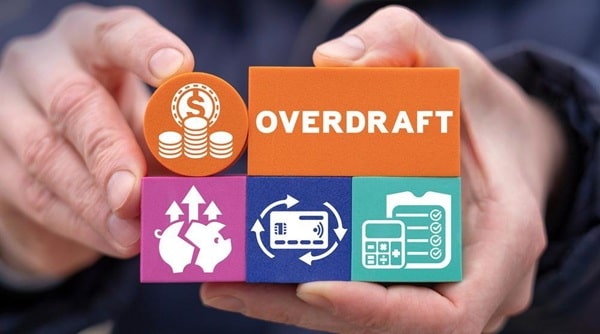Managing cash flow is one of the toughest challenges for any SME. From unpredictable payment cycles to sudden supplier demands, even the most well-run business can hit a cash crunch. That’s why more and more small businesses are turning to an underrated yet powerful financial tool: the overdraft facility.
Unlike traditional loans, overdraft facilities offer flexible, short-term credit access without lengthy paperwork or fixed EMI stress. And when it comes to working capital management, they could be exactly what SMEs need to stay ahead of the game.
In this blog, we break down how overdraft facilities work, why they’re a game-changer for SMEs, and how they help businesses stay afloat and grow, all at the same time.

Understanding the Overdraft Facility: A Smart Credit Buffer for SMEs
An overdraft facility is a pre-approved line of credit that allows a business to withdraw more money than what’s available in its account, up to a set limit. The best part? You only pay interest on the amount you actually use, and only for the number of days it’s used.
For instance, if your overdraft limit is ₹5 lakhs and you use ₹50,000 for ten days, you’re only charged interest on ₹50,000 for those ten days. That’s way more flexible and cost-effective than taking out a term loan for short-term needs.
Why SMEs Need a Reliable Credit Buffer?
Small and medium enterprises often deal with delayed customer payments, seasonal sales dips, and sudden operational costs. Even a short gap in cash inflow can disrupt daily operations. In these moments, an overdraft facility can help bridge the gap without having to apply for fresh loans every time.
Key Benefits of an Overdraft Facility for Working Capital Management
When it comes to handling day-to-day operations, the overdraft facility can act as a financial safety net. Here’s how it actively supports working capital management for SMEs:
1. Smooths Out Cash Flow Disruptions
Delayed payments from customers or clients can bring business operations to a halt. With an overdraft facility, SMEs can cover regular outflows like rent, salaries, and utility bills, even when incoming payments are delayed. This ensures business continuity and maintains vendor and employee trust.
2. Enables Quick Inventory Replenishment
Missed out on a sales opportunity because you didn’t have the cash to restock? That’s where overdrafts help. Whether it’s festive-season demand or a sudden sales spike, businesses can instantly tap into overdraft funds to stock up and keep their shelves full.
3. Covers Emergency Expenses Without Hassle
Whether it’s equipment repairs or last-minute bulk orders, businesses often face unplanned expenses. Instead of applying for a new loan, SMEs can use their overdraft to tackle these costs quickly and repay when their cash situation stabilises.
What Makes Overdraft Facilities Ideal for SMEs?
For any SME owner, flexibility, speed, and simplicity are non-negotiable when it comes to credit. That’s exactly what the overdraft facility offers.
1. No Collateral Required
Unlike many business loans that ask for property or fixed assets as security, many overdraft facilities are collateral-free. This makes it accessible for SMEs that may not have high-value assets to pledge.
2. Minimal Documentation
Overdrafts generally require far less paperwork than traditional loans. With basic documents like your Udyam Registration and 12-month bank statement, you could get quick approval without stepping into a bank branch.
3. Interest on Usage, Not the Limit
You don’t have to worry about paying interest on the entire credit limit. You’re charged only for what you use and for the time you use it. This makes the facility highly cost-effective.
Eligibility Criteria for SMEs to Avail an Overdraft Facility
The good news? Securing an overdraft facility is now easier than ever for small and medium enterprises, thanks to the flexible criteria offered by many banks and financial institutions. If you’re looking to manage cash flow gaps or meet urgent working capital needs, here’s what you generally need to qualify:
- Business Vintage: Your enterprise should have a stable operational history, typically with a minimum of three years in business. This helps lenders gauge your consistency and financial discipline.
- Udyam Registration Certificate: A valid Udyam Registration Certificate acts as official proof that your business qualifies as an MSME. It’s a key document required by most lenders.
- Bank Statements: You’ll need to submit bank statements from the past 12 months. These give lenders insights into your cash flow patterns and overall financial health.
- Existing Account Not Always Necessary: Interestingly, some lenders allow you to apply for an overdraft facility even if you don’t have a current account with them. This opens doors for more SMEs to access funding without switching banks.
A Financial Tool That Keeps You Moving
The overdraft facility is no longer just an emergency fallback. Instead, it’s a reliable, smart way to manage your working capital effectively. For SMEs managing unpredictable cash flows, delayed payments, and high operational costs, it offers the kind of breathing room that other financial tools rarely provide. It empowers business owners to make quick decisions, handle short-term expenses, and seize growth opportunities without being held back by rigid loan processes.
If you’re an SME owner looking for more freedom in your finances, it’s time to explore how an overdraft facility can support your day-to-day operations and your long-term goals. Many leading financial institutions like HDFC Bank offer flexible overdraft solutions tailored for growing businesses.